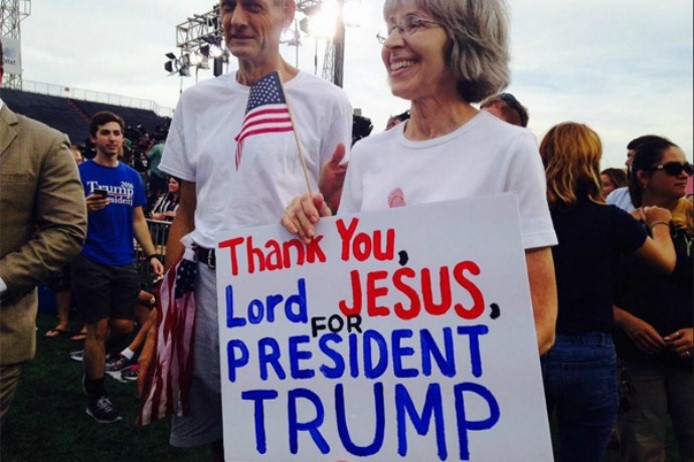I have been working from two directions in the development of our discourse here. The first direction, obviously, is my own work that began in one place, and still is there, but has verged out of that place recently. The second direction, is to use my work, and our conversations to push the development of substantive attention to religion in the field of media studies. I’ll quote myself—or rather my blog—on this latter point:
Regular readers know that my main thing is exploring and explaining how deeply interconnected media and religion are. The problem is that they interact with each other in different domains and different registers. It is not just about how religions use media or media use or cover religion. It is not just about how secular media disadvantage religion or promote religion. It is not just about how journalists cover religion. It is not just about how religion channels represent or shape or promote religion. It is not just about how the media have usurped religions’ abilities to control their own symbols or their own messages. It is not just about how supposedly secular media have become places where important religious work is done in areas like ritual or effervescence or enchantment. It is not just about how and where media become platforms of power or struggle over religious truth or religious resources. It is not just about how media “imaginaries” allow the construction of worlds and geographies that are impossible, yet deeply attractive or salient or motivating. It is not just about how religion channels and networks (online and offline) come to be “infrastructures of affect” through which real cultural and political work is done.
It is about all of these things, and more. And it is deeply troubling to me that influential voices, from journalism to the academy don’t get it, and don’t talk about media when they are talking about religion or vice versa. That is a problem for the public understanding of religion. And it is a particular failing of my professional field: media or mass communication studies.
So, how to address this? One way is to build a research or scholarly record that demonstrates the value of addressing religion in relation to the larger projects of culturalist media studies. My “object” of study in this project has been Protestantism (of course), specific representations of the Protestant project in North Atlantic media history, and the marking, through media, of broader cultural and political geographies with a Protestant moral architecture.
A Productive Exploration
This essay is about a productive outcome of an exploration of the latter dimension: the way that the Protestant imagination has come to mark and motivate specific social and political trajectories in contemporary culture. My exploration has not only revealed much about significant trends in contemporary culture and politics, it has led me to a new analytic category, what I call “Affective Infrastructures,” or perhaps more precisely “mediated infrastructures of affect” that are deeply rooted in and connected with religious imaginations of various kinds, but at the same time provide real, material, politics.
The historical context is the Brexit/Trump era in North Atlantic politics. I’ve been tracing a specific set of dimensions in this politics that link together the white identity politics represented by Trump (and deeply embedded in European neo-populism) to social imaginaries that are deeply inflected with religion. This religious inflection is both explicit and implicit.
It is a story that ties together deeply ambiguous and contradictory relations in at least three contexts: the U.S., Russia, and Brazil, with resonances in places beyond. This ambiguity is most obvious in the case of Donald Trump and the deeply contradictory moral framing of Trump by his most loyal constituency: Evangelical Christian leaders. But it is mirrored in the relations between Vladmir Putin and the Russian Orthodox Church and between Jair Bolsonaro and the neo-Pentecostal power centers of Brazil. Each of these is—in its own terms—a contradiction. But each at the same time derives tremendous cultural power and significance from the cultural work that binds together these incommensurables.
That cultural work is a profound work of imagination and of the power of social imaginaries to drive real, material social relations and real, material politics. At the root of the Trump/Evangelical and Putin/Orthodoxy and Bolsonaro/Pentecostal pairings are interest and relations that are simply not explainable using conventional categories of “interest.” These relations are not explained by conventional political or class analysis. There is something else going on (and this will require more attention than I can give it here): an emerging set of powerful affinities and relations that circulate around interests beyond the social, structural, or class spheres. That “something else” ought to be directly in the wheelhouse of culturalist media analysis because it can be seen to work through hypermediative systems of circulation.
Hypermediative circulations
For the time being, I am finding it useful to focus on hypermediative circulations of various kinds as operating in these relations in an “affective” rather than in a “cognitive” register or in a register of knowledge or rational purpose. Let me give you an example that is not Trump because it is illustrative. You know (but then again you may not) that the Trump/Evangelical alliance is exactly mirrored by these others. Let me focus on Russia. Putin and the Orthodox Church have developed a relationship that is deeply productive for each. The themes that bind them are ones that very much echo the concerns of the Evangelicals here. They are all concerned about the decline of religion’s influence in the culture. Putin has positioned himself—and Russia—as saviors of this situation. He has characterized Russia as a bulwark of Christianity and Christian morality against both the Muslim threats to the East and the moral depravity (where they allow gays to marry, for example) of the West. He is very explicit about this and this imaginary is echoed by the Orthodox establishment.
The recent split in Orthodoxy, with the Ukrainian church leaving the Russian church, is not a trivial matter. It is deeply and profoundly connected with Putin’s and Russia’s expansionist agenda. The imagination of religion in these relations allows profound and troubling alliances to form. The imagination of common purpose between Putin/Orthodoxy and Trump/Evangelicalism is not ephemeral, it is quite material. Orthodox and Evangelical leaders meet and talk and attend conferences focused on the protection of Christians globally.
Trust me, there is much more to say about this, and I’ll get to it. But now on to “affective infrastructures.” In the middle of the Putin/Orthodox nexus is a television channel called “Tsargrad TV.” That roughly means “reign of the Czar.” Enough said about the name. Tsargrad TV is owned and operated by an Oligarch who is close both to Putin and to the Russian church and it can rightly be described as the “Fox News” of Russia or more precisely a combination of Fox news and the 700 Club or the Eternal Word Television Network. One of the senior executives of Tsargrad TV, in fact, came from Fox news. He is a former Hannity producer who moved his family from New York to Moscow in 2011 and converted to Orthodoxy. There is also much more to be said about this.
Affective Infrastructures
But let me turn to the idea of “affective infrastructure.” Circulating in these relations are not only Tsargrad TV but also the recent film The Trump Prophecy and Steve Bannon’s The Torchbearer. I would like to develop an argument that media circulations like these contribute to “infrastructures of affect” that provide powerful and convincing articulations (meaning it the way Stuart Hall meant it) whose purpose is to make the seemingly incommensurable instead plausible within publics. They thus provide imaginaries that can organize actual politics, prompt material action in the social sphere, and create and maintain new “publics.”
There is a lot of work to be done to develop a more complete account of these processes. So stay tuned. But for now I’ll argue that this exploration—which is already proving exceedingly productive—would simply not have been possible without taking seriously the role of religion in the structuring of the imaginaries that make a new, global, set of relations work.

